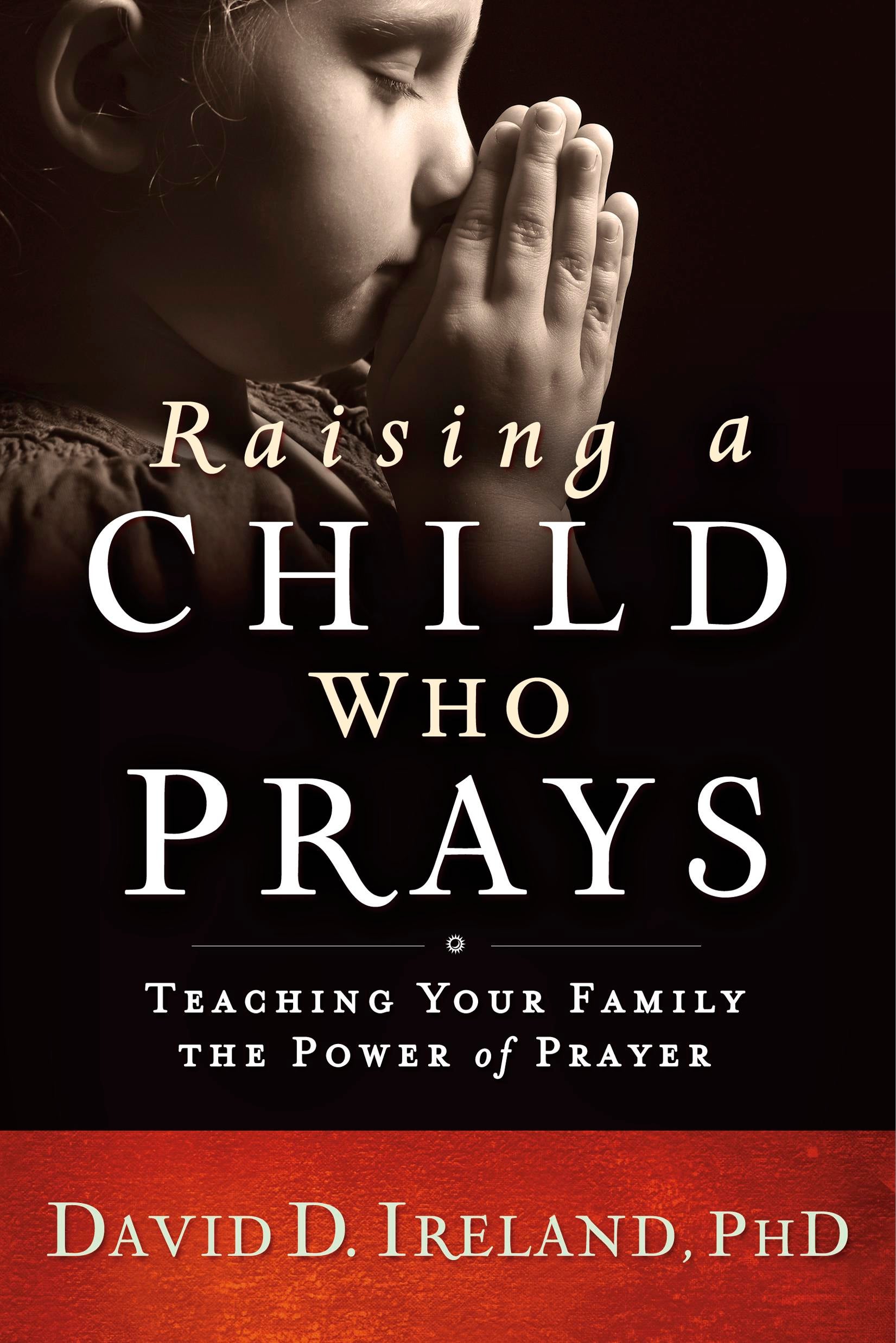Making Prayer Essential to Your Children

As parents and grandparents we should all want what is best for our children. The best schools, teachers, coaches, even the best brand of laundry detergent are what we most desire for making their lives better.
Sometimes in our never-ending quest to provide these opportunities we forget about the most meaningful things in life … like our children’s spiritual welfare.
Not to worry as Pastor and author Dr. David Ireland believes that parents can create a welcoming culture of prayer in our homes that lends itself naturally to the spiritual development of our children.
In his latest book, Raising a Child Who Prays, Dr. Ireland identifies many practical steps a parent can take to cultivate the innate desire for children to grow in their faith by regularly talking to God.
I recently sat down with Dr. Ireland to discuss why it is so important to instill prayer in young hearts, examples of how to do this, and some essential prayer lessons to be learned from a notable woman who lived nearly 300 years ago.
David, you have a new book coming out in August. What can you tell me about it?
The new book is titled Raising a Child Who Prays. I think one of the biggest shortages in the Body of Christ is that we are not really intentional about raising children who have a real understanding of prayer and a relationship with God. This book unpacks all of that.
You have written other books about prayer. Why a book specifically targeted toward teaching children to pray effectively?
My last two books were The Kneeling Warrior and The Weapon of Prayer. I felt like that for it to be a trilogy I was not touching the next generation. So, I wanted to provide some type of roadmap to parents and grandparents as to how they can be able to engage their children in an intentional way. In fact, at the end of the book I have about 20 prayer exercises that a parent can pray with their child. These exercise consist of things like understanding how to forgive. The exercises are very practical. For example, you can use your cell phone to show your child pictures of people you have photographed and pray for the people in those pictures. There are many simple and interesting ways you can engage in prayer.
I get the sense that prayer does not come naturally to people. I am speaking from experience. From your perspective as a pastor and author, is prayer something that you have to work at or should it just come naturally?
I think it’s both. I think there is this knee-jerk reaction when something happens to most of us. I have seen back-slidden people say, ‘Thank you God. Praise you for this opportunity.” But when we have an intentional knowledge of loving the Lord and then responding to His love in a praise-filled way, then it becomes a habit that we develop. And I tell people that if prayer and even praise is not your first love, make it your first discipline. So, I teach people how to really grow in the discipline of prayer.
You have obviously conducted a great deal of research in writing this book. You cite many different scriptures and Bible stories in the book. Was there a common thread that you uncovered that you can point to?
There was. The common thread was the people that grew as powerful in prayer when they were children and then developed even more so as they became adults. They were people who had parents that understood how to massage, to respect, to cultivate and develop that aspect of Christian living. For example, Mary and Joseph. How do you raise a savior? How do you raise someone who is the Son of God? We don’t have the tools but what I have learned and discovered from that passage is that fact that you don’t have to be a perfect parent to be a good parent. Jesus wasn’t looking for perfect parents. He was looking for parents who understood how to give Him latitude and space. Mary pondered things in her heart when she didn’t fully understand their mind. Such is the case with us as parents. As a parent, I must realize there are some things I won’t know what to do or how to do it but I need to hold and ponder in my heart. Sometimes, I need to mull them over and develop my child into the way he or she should go. So, I say the same thing applies today with parents. In fact, a very interesting historical role model is Susanna Wesley, mother of John and Charles Wesley. She had 19 children but yet she seldom missed an hour of prayer in her own prayer life. She used to teach her children that whenever they saw her with her apron over her head don’t interrupt her. She’s in her place of prayer. What Susanna did because she valued prayer so much is that she taught all of her children the place of prayer and groomed and raised them to be men and women of prayer. What she did is she taught them the Lord’s Prayer as soon as they were able to speak. She had them memorize that. As they grew, she began to add to that into their prayer arsenal by praying for family members, praying for mom, praying for dad, praying for grandparents. So, I cite examples in my book, not only about practice and the disciplines of prayer but also more child psychology and child development. How do children learn? How do they understand? It’s important to stress to children not to be robotic in their prayer life. Teach them to love it, enjoy it, and to put their whole heart into it. My book is almost like a roadmap to say let me come alongside you as a parent or grandparent and walk you through the process of showing you how to develop the prayer lives of your children.
With that said, we are living in a world with lots of distractions. Today, kids have cell phones, texting, video games, social media … the list goes on and on. What are some practical things a parent can do to instill in their children the need to pray?
Good question. I think one thing is that I always encourage parents to set up a time in the evening based on the age of the children (8pm is usually pretty safe for all ages) when you have a no text zone. Children shut off all of their technology devices and you have a quiet time of reflection as a family. You can either play inspirational music that they like or have them sit and read a Bible verse together. But do something that says we need to quiet our souls and be able to get in touch with God. I teach parents to help their kids understand how valuable that is by them bringing value to it in their own lives. That’s one of the ways parents can make that happen. The other way is just through their prayer exercise – making it fun so prayer is not looked upon as something monotonous, boring, dull, or lifeless.
Can you provide an example of something fun that kids can do make prayer engaging to them?
For example, one prayer exercise is to send a text to grandma or grandpa who might not be believers simply saying, ‘I know you don’t pray much but I just want you to know that I prayed for you today.’ Little things like that. Or, sitting with a parent and have them make a Facebook post sharing what their children prayed for that day. You would be surprised; some of those posts might even go viral. It’s showing your child something as simple as using social media to integrate into our spiritual formation.
As an author, what is the one thing that you want people to take away with them after they read Raising a Child Who Prays?
I want my readers to learn that you can be intentional about teaching your child about prayer. I want readers to not be so dependent upon the Church because the Church is not supposed to take your place as a parent in helping your children grow. We should supplement and complement with the Church but not let it be the sole influence. The Church is not there to take the full role. It’s your job as a parent to teach your child how to pray.






